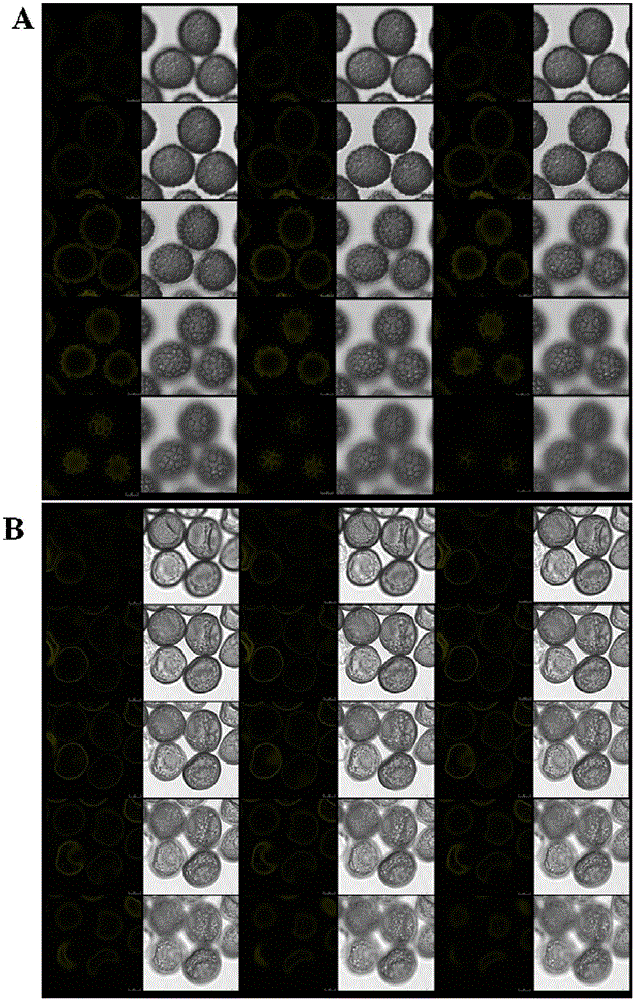Method for identifying teliospores of Tilletia controversa Kuhn and Tilletia foetida
A technology for wheat with dwarf fishy black ears and light fishy black ears, applied in the field of cell biology, can solve the problems of TCK quarantine difficulties and difficult to distinguish, etc.
- Summary
- Abstract
- Description
- Claims
- Application Information
AI Technical Summary
Problems solved by technology
Method used
Image
Examples
Embodiment 1
[0020] Embodiment 1. Utilize method of the present invention to distinguish TCK and TFL teliospore
[0021] 1 Materials and methods
[0022] 1.1 Test materials
[0023] Pathogens to be tested: 3 strains of T. triticum dwarf and T. glabris galls each.
[0024] Glass slide production: make a teliospore smear according to the method given in the national standard GB / T18085-2000. After drying, add 1 drop of oil lens oil without fluorescent substances to the microscope inspection site, add a cover glass, and make it for use Confocal laser scanning microscope autofluorescence detection of slides.
[0025] CLSM system: using high-performance Leica TCSSP8, the whole system is mainly composed of an inverted fluorescence phase contrast microscope, a group of multi-wavelength lasers composed of semiconductor lasers, argon ion gas lasers, and helium-neon ion gas lasers, and a workstation that controls the operation of the system .
[0026] 1.2 Layer-by-layer scanning (xyz scanning) ob...
PUM
 Login to View More
Login to View More Abstract
Description
Claims
Application Information
 Login to View More
Login to View More - R&D
- Intellectual Property
- Life Sciences
- Materials
- Tech Scout
- Unparalleled Data Quality
- Higher Quality Content
- 60% Fewer Hallucinations
Browse by: Latest US Patents, China's latest patents, Technical Efficacy Thesaurus, Application Domain, Technology Topic, Popular Technical Reports.
© 2025 PatSnap. All rights reserved.Legal|Privacy policy|Modern Slavery Act Transparency Statement|Sitemap|About US| Contact US: help@patsnap.com

